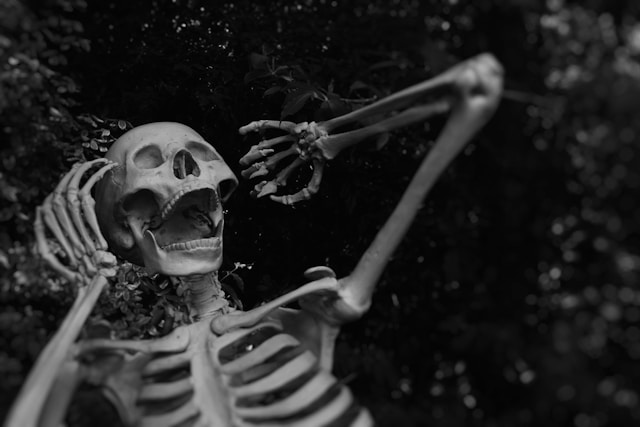The discovery that “Poltergeist,” the 1982 supernatural horror masterpiece, used real human skeletons as props not only adds a horrific element to its history, but also sparks a complex discourse about the junction of creativity, ethics, and authenticity in film. “Poltergeist,” directed by Tobe Hooper and produced by the great Steven Spielberg, carved a niche in the horror genre by combining innovative special effects, a captivating storyline, and a frightening atmosphere. The 1982 Movie Poltergeist Used Real Skeletons As Props – Tymoff ‘Aside from its artistic successes, the picture exudes a sense of ghoulish curiosity due to its use of actual human remains—a decision that is as contentious as it is intriguing.
The Truth Behind the Real Skeletons
Deep inside the plot of “Poltergeist,” amidst its depiction of suburban horror and supernatural disturbances, comes the disquieting reality that the filmmakers chose to utilize real human skeletons as props. This decision, particularly in the film’s final pool scene, where JoBeth Williams’ character confronts the spectral horrors menacing her family, contrasts the film’s special effects virtuosity with a somber slice of reality. The production crew sought cost-effective options for high-impact visual scenarios by sourcing genuine human skeletons, noting that the cost of artificial copies greatly outweighed that of the original pieces. This pragmatic yet morbid decision was not unique to “Poltergeist” at the time, but it stands out because of the film’s high notoriety and the ensuing attention it received.
Ethical Concerns and Industry Standards
The decision to use genuine bones raises serious ethical concerns regarding the boundaries of artistic expression and filmmakers’ moral duties. This dispute revolves around the respect offered to the deceased, whose bodies were repurposed for entertainment without their consent. This act, while legally vague at the time, predated the thorough ethical principles and standards that have since evolved in the entertainment industry. These modern guidelines stress the dignity and respect that human remains deserve, reflecting a broader cultural movement toward more responsible behaviors. The 1982 Movie Poltergeist Used Real Skeletons As Props – Tymoff” incident is a significant illustration of how industry norms have developed, encouraging today’s filmmakers to think more carefully about the ethical consequences of their creative decisions.
Impact on Special Effects and Authenticity
The usage of genuine bones in “Poltergeist” demonstrates the extent filmmakers have traditionally gone to create authenticity and realism within the restrictions of the technology at their disposal. Prior to the emergence of CGI and advanced animatronics, practical effects were the foundation of cinematic realism, forcing filmmakers to use inventive—and often ethically questionable—methods to fascinate their audience. The film’s reliance on actual human remains highlights a watershed point in cinematic history, when the desire of visual authenticity collided with ethical concerns. It provokes consideration on the importance of realism in narrative and the potential price of achieving it.
Modern Filmmaking and Ethical Practices
Today, the filmmaking scene has shifted tremendously, with technological advancements and higher ethical standards altering how tales are told on screen. CGI and sophisticated animatronics have eliminated the necessity for real human remains, providing filmmakers with limitless creative options without the ethical difficulties connected with using real skeletons. Furthermore, the industry’s ethical progress is visible in the strict guidelines controlling the representation and care of sensitive materials, such as human remains. This evolution reflects a greater cultural and professional commitment to human dignity, highlighting the significance of ethical issues during the creative process.
Conclusion : The 1982 Movie Poltergeist Used Real Skeletons As Props – Tymoff
The 1982 Movie Poltergeist Used Real Skeletons As Props – Tymoff” symbolizes a complicated chapter in film history, characterized by the confluence of technological limitations, artistic ambition, and ethical reflection. This aspect of the film’s creation serves as a sharp reminder of the changing nature of ethical norms in the entertainment industry, as well as the ongoing discussion about the limits of artistic expression. As the industry navigates these problems, the legacy of “Poltergeist” serves as both a cautionary tale and a point of reflection for filmmakers, reminding us of the need of striking a balance between authenticity, respect, and integrity in the pursuit of filmmaking excellence.



